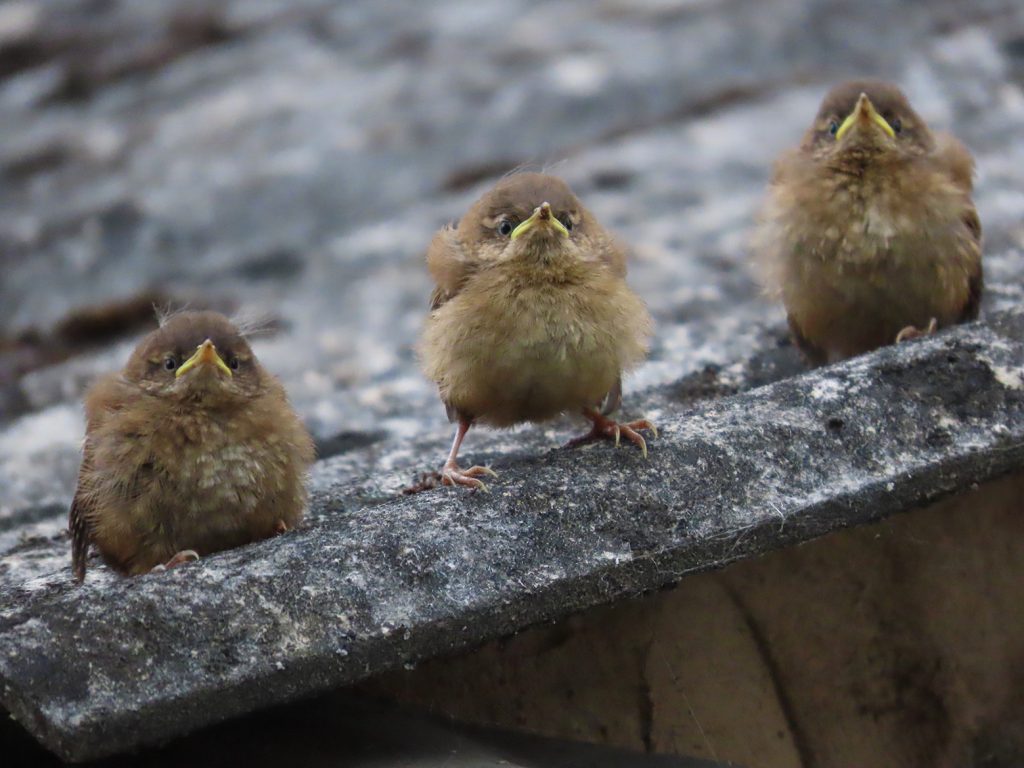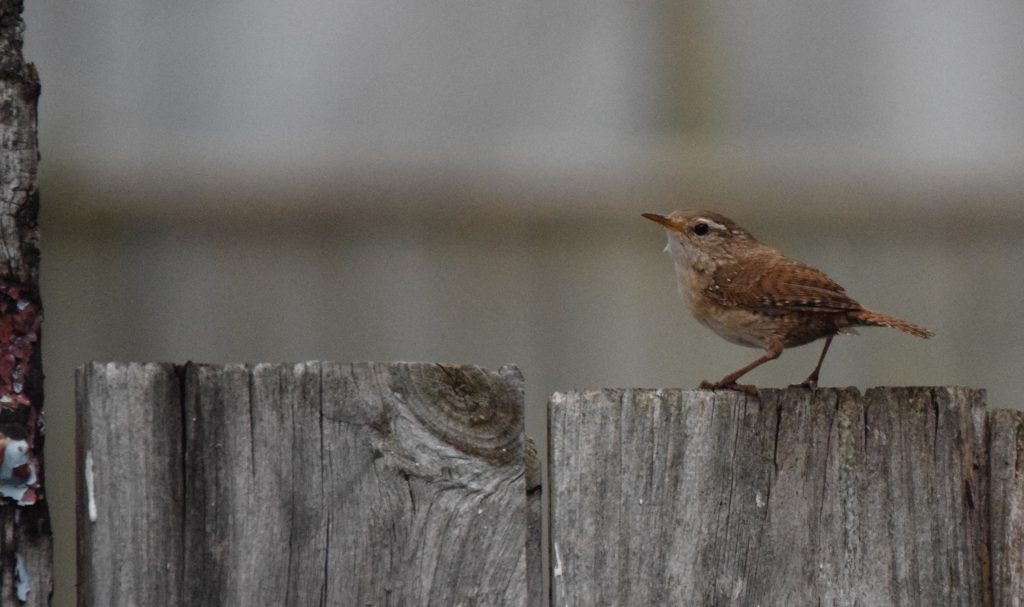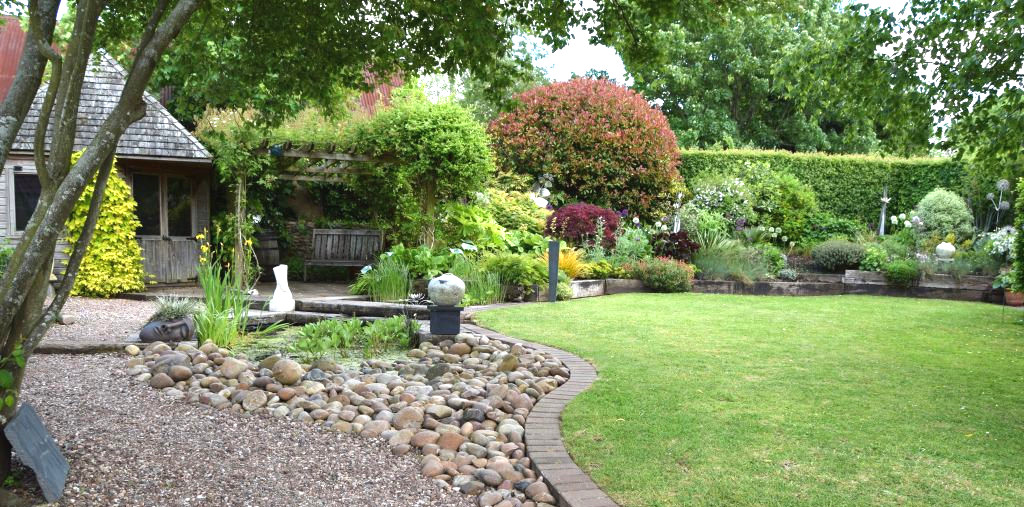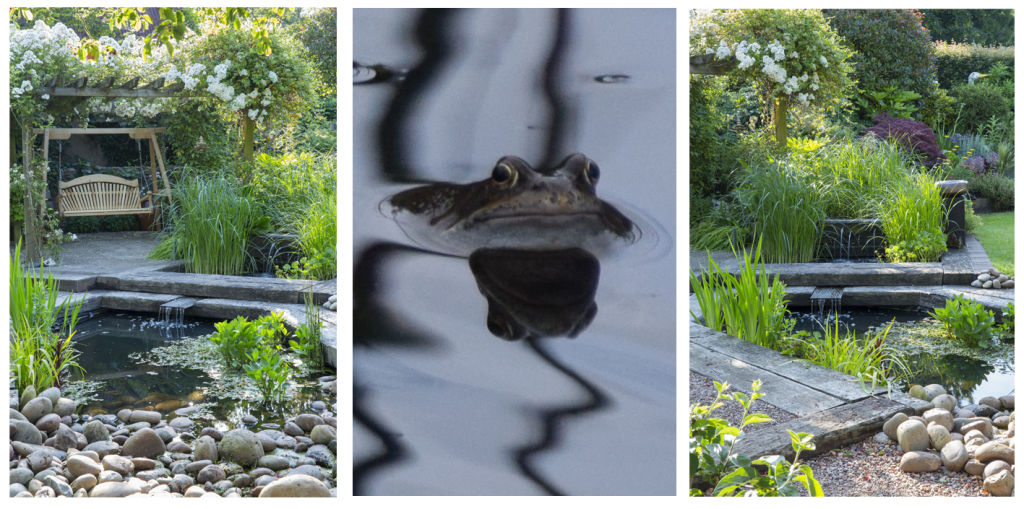Generally my exercise has been taken in the garden in recent times, digging absurd quantities of rubble from a new piece of land. The garden and land behind were historically one of a few burgage plots in the village. Burgage plots were usually long, narrow tracts of land behind a dwelling, that were measured in multiples of the basic unit of the perch (five and a half yards). They were held by ‘free tenants’ (burgesses) who were allowed to practice trades and elect members of the council. My plot can be traced back to a list in the Inquisition Post Mortem of the Albermarle family (Lords of the Manor) in 1288. Later it was known as Furness Orchard and garden, Furness being a corruption of furnace (possibly from the bakehouse that existed here or the malthouse next door) – and now of course highly appropriate for a potter firing several kilns.

I have been working and living in Woodbury for over thirty years but have rebuilt the garden more or less from scratch over the last eight years or so – it’s ongoing. The ponds quickly filled with wildlife: masses of frogs and newts lurk in the elodea and bog bean, fierce dragonfly larvae eventually leave their watery home to climb the reeds or the flag iris stems to emerge and take flight – and whirligig beetles try and find some clear water, free of the ever present duckweed, to dance their dizzying whirls like nimble bumper cars. The deeper middle pond was home to some fish but none has survived a recent heron raid. A copper pipe water feature is my own Heath Robinson effort – recycling in more ways than one!



I have a robin that skits around the garden after me, head cocked to one side when I talk to it, hoping for an easy worm or a grub or two. In the evening it sings (especially for me of course) from the very highest limb of an apple tree. On the other side of the garden, hidden in the thick ivy clinging to a willow, there’s a blackbird’s nest. The female is the nest builder, sometimes two or three each season for separate broods – but both parents are constantly active, scrabbling around for caterpillars to fatten their young. There was a commotion of alarm calls the other day when an agile sparrowhawk streaked through the branches like a missile in pursuit of an unfortunate pigeon. This year, sadly, my house martins haven’t returned. However a wren took up residence in one of the mud pellet nests that hang from the eaves just above my bathroom window. I could listen to the twittering conversations during my horizontal ablutions. Then six fledglings suddenly appeared on my windowsill and fluttered around the courtyard dicing with danger until the parent eventually encouraged them into a thick virginia creeper.

I ventured out and walked along the coast path the other day from the river Otter near Budleigh (the river that is now home to a colony of beavers). It was one of those beautifully clear, sunny afternoons, the views along the undulating Jurassic Coast spectacular. Skylarks were catching the wind from the sea and advertising their territories by rising from the open fields that roll to the cliff edges. Their song is so evocative.
I wish I’d paid more attention to my English teacher. I’m not very au fait with Blake or G M Hopkins but a distant memory recalled GMH’s The Windhover. Reading it, I believe it was a poetic concoction from a kestrel-based stock rather than skylark – and fecund with metaphysical allusions – but perhaps it resonated a little because, like me, he was brought up a high-church Anglican. It’s full of ‘accents’, directions presumably for reading emphasis. I don’t really understand them – or perhaps I just cockily baulk at the instruction!


I did half-hear something on the radio recently about John Clare, another poet I know very little about, other than he came from humble origins and ended up in an asylum. However, he was a great naturalist and did write about skylarks. At this strange Covid time I do find a spirit of freedom in the bird and other wildlife that surrounds me – even if, like John Clare, I often feel like hunkering down like a leveret in the corn.
Artist and gardener Tim Andrews is all fired up for his outdoor exhibition. Tamsin Westhorpe discovers a garden that offers a different look every year.
Ask ceramicist Tim Andrews if gardening is art and he is quick to answer – “Of course.” His garden, the secret to be found at the back of his cob cottage and studio in Devon, acts as a place to take a break from his craft and the perfect venue for his annual outdoor art exhibition. Tim is renowned for his striking raku ceramics that is admired both locally and across the world. He comments that both his passions – gardening and pottery – involve working with mud and minerals. “There is only so much control that you can have over both clay and the garden,” he elaborates. His work, although created primarily for indoors, is often inspired by the colours and textures of the garden.

Tim has lived at Furness Orchard in the village of Woodbury for 30 years. The house is typical of the area with cob and brick walls and dates back at least to the 16th century. In the heart of the village, with views of the church it is idyllic. “The property was once a bakery, so the site has always been a place of industry in the community,” explains Tim. The garden has evolved over the years from a place where his children kicked footballs to a restful retreat that Tim has created himself. “In order to make sure I would complete the garden as it is today, I organised an outdoor exhibition three years from the day I started to dig. The idea was to ensure that I didn’t rest on my laurels,” recalls Tim. Even with this deadline he confesses that he was still building a cobbled wall days before the exhibition.
“Locals are very surprised to discover the garden as it is not overlooked and completely private – it’s a hidden gem and larger than some other gardens in the village.” He didn’t meticulously plan the garden, but instead let it evolve. “It breaks all the rules, I haven’t divided it into rooms, you can see almost the entire garden as you enter it, but it seems to work”The focus of the garden is on foliage plants. Now mature, these plants allow the pottery, metal work, stone and wooden pieces, that often feature in his exhibition, to take centre stage. The mature beech hedge is the perfect backdrop for the larger pieces and many features are placed on the gravel areas in the garden to offer a neutral background. The garden faces south which allows Tim to enjoy sun in both the morning and evening. However, it is after dark that Tim finds the garden most magical. “I often fire my work at night and open the doors of the studio onto the garden,” says Tim, “I hear the owls hooting and screeching and on warm summer nights watch dragonfly larvae climbing the reeds in the ponds and magically emerge from their skins as fully formed adults, pumping up their wings, ready to fly in the morning before they can be snaffled by a bird.”

Tim values the lawn but is not a slave to it. “My neighbours have a walnut tree in the garden and the squirrels regularly raid it and then dig holes in my lawn to bury the nuts – so it is far from perfect,” Tim says with a resigned smile. The lawn, hedges, fences and walls give varying backdrops for Tim to play with when placing art. This is a garden that has a dual role. It offers Tim the chance to relax and enjoy plants and wildlife and is an exhibition venue for his art. He is amazed how long people stay when they visit but with art to suit every taste and a well planting setting – who can blame them?
The three ponds in the garden are not huge but are home to newts and frogs. The ‘bottom pond’ has an edge of sleepers and a cobble beach. Many of the cobbles have been dug up from the garden. “When working the clay soil here I often dig up ‘popples’ – river washed cobbles. I’ve used these to create a cobble beach by the pond,” he explains. Tim regularly exhibits his work in Japan and although his garden is not overtly Japanese in style, it possesses something of the quiet spirit found in gardens such as the Kenrokuen gardens in Kanazawa. Offering views over the bottom pond is the summerhouse.
This is used occasionally by Tim in the WARMER WEATHER as a place to work. From here he can look out over the garden, with an attractive vegetable patch on one side and a fine example of Rosa ‘Rambling Rector’ in the other. With this description you would assume that the garden is of a classic cottage style, but it isn’t. It has modern planting made up of mainly foliage plants and has an order that makes displaying work easy. Slugs and snails are Tim’s biggest garden enemies. With so many foliage plants he has a battle on his hands. He is convinced that under their shells there are wings!
Woodbury Studio Gallery – Greenway, Woodbury, Exeter, Devon EX5 1LW
Tel: +44 (0) 1395 233475
Email: timandrews@eclipse.co.uk
